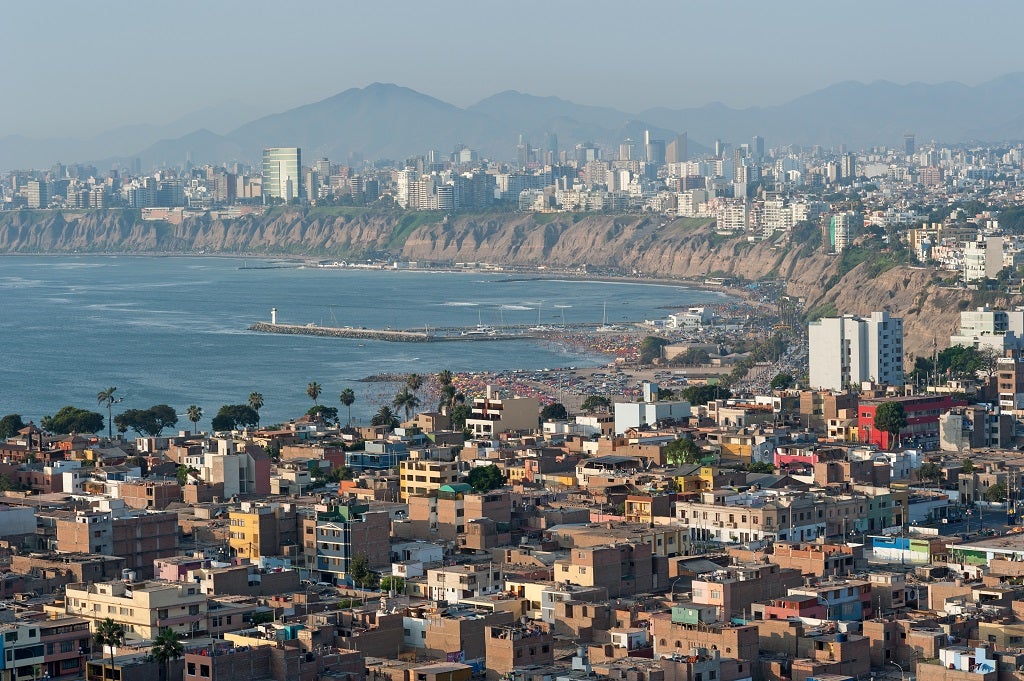Moving to Lima
Lima
-
Affordability 6 out of 5
-
Safety 6 out of 5
-
Healthcare 1 out of 5
-
Traffic Flow 6 out of 5
-
Property affordability 6 out of 5
-
Climate 1 out of 5
-
Environment quality 6 out of 5
When the conquistador Francisco Pizarro defeated the Inca king Atahualpa in 1532 he needed a capital city in which to base his new South American empire. The new city had to be near the sea so that the silver dug from the foothills of the Andes could be easily transported back to Spain and it needed to have good weather, fertile land and abundant resources for supporting a growing population. The site of modern day Lima was his choice.
Today the largest and capital city of Peru, Lima is no longer exporting South American silver to be minted into Spanish Reals but it is still one of the most important financial centres in Latin America. It processes the trade of textiles, clothing and food manufactured in Peru as well as the export of oil and minerals to the rest of the world.

Lima’s history is writ large in its cityscape, the variety of architectural styles spanning from the pre-Columbian era through colonial mansions and baroque churches to the brutalist styles of the military dictatorship of the 1960s and modern glass skyscrapers. The population that moves among these buildings is just as diverse and complicated. Mestizos, Europeans, Afro-Peruvians and Asians all live side by side and contribute to a rich culture of seductive music and mind blowing cuisine.
Moving to Lima from the UK
Moving from the UK to Lima is a much more straightforward process than one might at first think. The predominant language in Lima is Spanish – which is one of the most readily available to learners both in terms of online resources and actual courses – in a dialect known as Peruvian Coastal Spanish which, unlike many other South American dialects, is very close to the Spanish actually spoken in Spain.
Obtaining a visa when you have paid employment lined up presents no serious difficulties. The Peruvian currency though does fluctuate greatly in comparison to the Pound, Euro and Dollar so keep a careful eye on exchange rates when working out how your new salary will compare.
With a population of just over 7.5 million and a population density about half that of London, Lima shouldn’t feel overwhelming to those used to UK cities. It does cover a large area though and public transport can be described as haphazard at best so obtaining an automobile could be essential for anything other than city-centre living.
Peru’s burgeoning economy saw the average house price in the Lima Metropolitan Area rise 19.9% to PEN 262,043 (about £60K) in 2011 and that trend shows no sign of stopping anytime soon.
Select the size of your move to get free quotes
Comparing Lima vs London
Though it technically sits in a desert at an elevation of up to 1,500m above sea level Lima actually has a pretty mild climate. Average high temperatures in the peak of summer (February and March) reach 27 °C, only a fe degrees higher than London’s summer peaks. London actually has a higher all time record temperature high (38 °C in 2003). In winter (August and September) average lows dip only to around 14 °C. Rainfall is virtually non-existent though. Just 13mm of precipitation fall, on average each year. Even so, due to persistent cloud cover Lima sees less hours of sunshine per annum than the UK capital.
The overall cost of living in Lima is much lower than in London. As well as cheaper rents and property prices you’ll also find lower prices in restaurants, supermarkets, on utility bills, at the petrol pump and in consumer outlets. The local average salary is far lower than London’s however, reducing local purchasing power.
On average, Limeans report spending marginally less time commuting than Londoners but also report feeling less safe, experiencing more pollution and receiving poorer quality healthcare.
The historic centre of Lima is a UNESCO World Heritage Site on the basis of its archeological sites and colonial era architecture including the Monastery of San Francisco and the Cathedral of Lima. The city has beaches at its Northern and Southern ends, a huge plethora of restaurants serving every cuisine imaginable and a thriving theatre scene.







